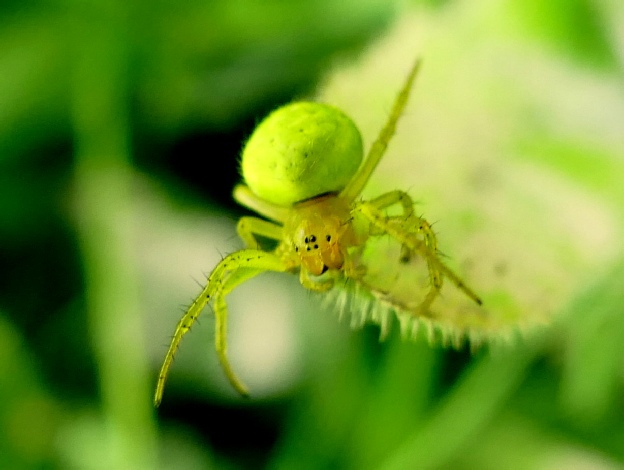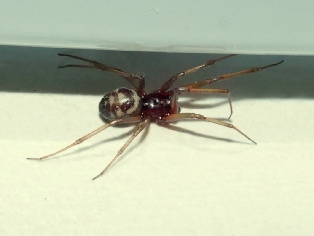Attentive mothers, masters of camouflage, intricate builders of sheet, funnel or orb webs, long-distance flyers, our spiders are fascinating arthropods, which are worthy of a closer look.
With a hard exoskeleton like a suit of armour, how do they grow?
And how are spiders, (like dragonflies) unique in having an extraordinary reproduction method using secondary sperm transfer? All is explained.
Crab spiders produce silk, dropping from a flower on a silk thread if disturbed, only to climb back up on its thread later. They make no web: just wait on a flower and pounce when their prey visits the flower. And they adopt the colour of different flowers as near perfect camouflage.
Our garden spider remakes its orb-shaped web every day, into which small insects fly and are trapped, cocooned and later ingested.
Spiders: fascinating and worthy of a closer look.

Other spiders make funnel-shaped webs and lay in wait in the funnel for a meal to land.
The Nursery web spider is highly protective of its eggs, which are laid in a conical web, which the mother guards diligently.
There is a quite common fear of the large hairy house spider.
This is perhaps understandable and yet when viewed in close up its eight eyes and multi-purpose mouth parts are impressive in their complexity.
In contrast with other spiders, the eyes of the Downy jumper spider are disproportionately large. With excellent vision and fast speed it scurries around our gardens and leaps on its prey for a venomous kill.
Harvestmen are not spiders. They have a simpler body, are non-venomous and don’t make webs. They visit my kitchen table with the blackcurrant harvest.
Nobody has ever died from a spider bite in the UK.
The differing forms and life styles of spiders are fascinating.
A deeper appreciation of which might reduce phobia towards these extraordinary arthropods.

Araniella sp. cucumber spider

False widow spider in my bathroom